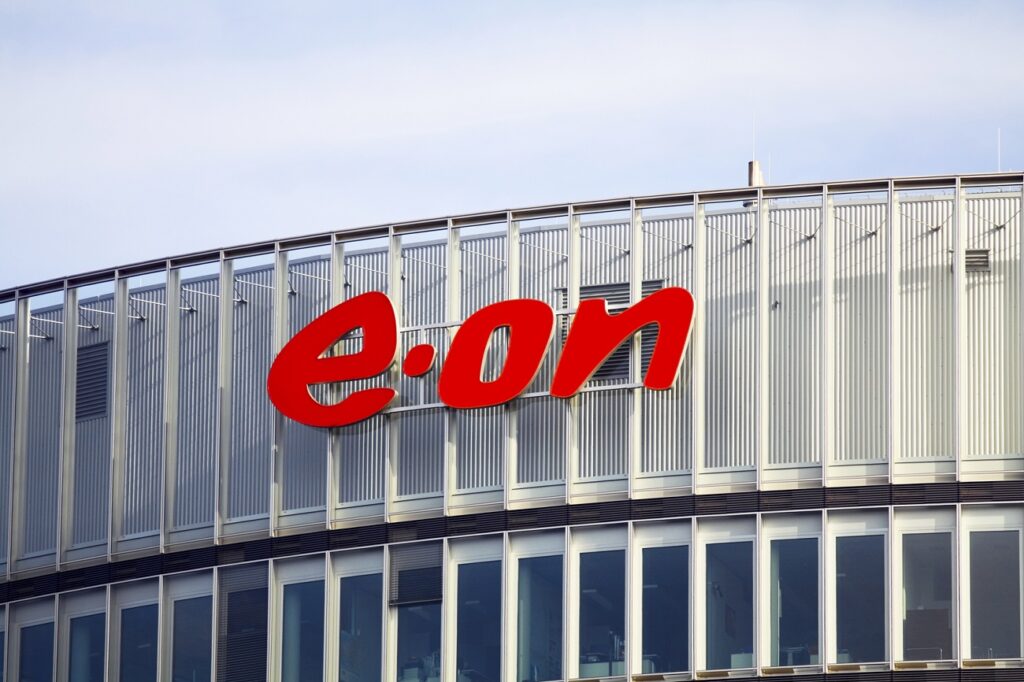Corporate transformations may be increasingly common, but that’s little consolation to those charged with executing them. E.ON’s recent split into two companies was about as complex a transformation as one can imagine, with an almost impossible timetable. The results speak volumes about the importance of good strategy, planning, and execution. They also serve as an example that should inspire business leaders—and HR teams in particular—about decision making and achieving goals amid major constraints, uncertainty, and time pressures.
With revenues of €116 billion and approximately 56,000 employees, E.ON is one of the world’s largest utilities companies. The company serves millions of customers throughout Germany, the UK, Sweden, and other European countries, as well as Russia, Turkey, and Brazil.
E.ON provides conventional energy (exploration, plus coal and nuclear-power generation and distribution) as well as renewables.
But in recent years, operating these two very different businesses had become increasingly difficult. So in November 2014, leaders decided to divide the company in two: the entire core business would be carved out into a new entity (Uniper, from “Unique” and “Performance”).
The renewables side would retain the E.ON name.
And the two companies would have to be fully operational as standalones by January 1, 2016.
Pulling off a transformation on this scale—in one year—would be ambitious enough.
But E.ON’s plan was remarkable on many levels:
- Operations had to be stable and the changeover seamless to ensure uninterrupted service to the company’s millions of household and commercial customers.
- The regulatory hurdles were significant, and numerous long-term contracts had to be fulfilled.
- Keeping the entire workforce engaged would be no small feat
- Workloads would be intensified
- Colleagues would soon become competitors, but would have to cooperate throughout the transition.
From an HR perspective, the one-year deadline was monumental.
Their guiding mantra: focus only on executing the carve-out. Optimizing processes and costs would have to wait.
Staffing decisions for a cross-border organization had to be made without triggering a war for talent. Some 14,000 employees, spread across multiple functions, legal entities, and jurisdictions, had to be allocated to Uniper.
HR systems would have to be updated and fully operational from Day 1.
Yet nothing could happen without the approval of work councils, through the mandatory months-long co-determination process.
“One2Two”: the game plan
Leaders knew that meeting such an aggressive timeline meant sticking to priorities.
Step one involved developing a plan, dubbed the “One2Two Project.” At the helm of the HR work stream was Michael Leicht, E.ON’s HR project leader, who devised the HR strategy and timeline.
He and his senior project team designated three critical HR milestones for the entire effort:
- Negotiation readiness: the point at which all functional measures had to be confirmed so that co-determination negotiations could begin
- Implementation readiness: the point when co-determination negotiations would have to be concluded so that employees could be moved to their new positions and HR implementation could start
- Day-1 readiness: the point when the new company was officially operational.
Negotiations would take an estimated five months. The co-determination process would take four to five months. That left just two-and-a-half months for the HR implementation.
Creating the HR steering framework
Working closely with the other carve-out project teams and unit HR directors, Leicht designed a three-pronged HR steering framework to clarify the required activities and keep everything on track. (See Exhibit 1.)

The framework would serve as a road map for the entire HR team—which also included HR Controlling as well as the company’s HR Services Center. It divided the effort into three phases:
1. Measure development
This phase entailed three primary activities:
- designing high level organizational structures and steering models for the two new entities;
- choosing allocation measures at the employee or position level based on the new design and;
- identifying appropriate HR tools to support these measures.
2. Co-determination processes
In each of E.ON’s countries of operation, the structural and staffing plans had to be presented to and approved by that country's co-determination bodies.
The European Work Council also had to be informed of all cross-border changes. Because any of these entities can challenge any aspect of the comprehensive plan, it was crucial that the plan was carefully thought through.
Co-determination involved three elements:
- Negotiation meetings: HR directors had to prepare for and hold negotiation meetings with co-determination bodies to discuss and agree on organizational changes, employee allocation/position plans, and other employee issues.
- “Balance of interests” documents: Labor law specialists out of the corresponding HR Competence Center had to draft official documents describing the proposed structural changes and stipulating the agreed-upon terms for implementation. Such documents had to be created for every E.ON organization in the company’s countries of operation.
- Benefits allowance packages: Decisions on the budget and conditions of benefits allowance packages had to be made for all affected employees.
3. HR implementation
This was where the plans actually got executed. HR directors would oversee the placement of employees and executives into their new positions and roles and handle local communications on such matters as organizational design and staffing procedures.
The HR Services Center was responsible for issuing new contracts, adjusting IT systems, setting up payroll and accounting processes, and more. Their work would involve making thousands of adjustments, always with zero tolerance for error.
The One2Two project timeline
From March through June 2015, the HR team dealt with overarching processes, such as preparing for co-determination and supporting organizational design.
The business-unit HR directors, for instance, coached regional executives on the HR game plan and co-determination process and requirements. HR Controlling prepared employee baselining for the employee allocations.
In Q1 and Q2 leaders forged the Agreement on Common Principles, the contract between the company and work councils that established the company-wide processes involving all re-allocated employees along with a timeframe for every stage of negotiation. Planning for employee allocations and operations began in July.
Consultations and negotiations on the detailed HR plans extended until the end of October.
That left E.ON with two months in which to formalize the new organizational structure and put people in their new positions. (See Exhibit 2.)

Tough decisions, big challenges
From the beginning, E.ON executives decided to follow fair allocation principles: letting the employee follow the function or position, rather than opening up positions for people to apply for.
Leaders also followed standard employee allocation guidelines, resolving any ambiguous situations in close cooperation with HR directors.
To minimize employee anxiety (and possible attrition) and keep the allocation decisions as uncontroversial as possible, leaders established a retention strategy: every employee would be offered a position in one of the two new entities.
It’s an unfortunate reality that centralized personnel and job data are often not up to date.
Another major challenge: determining where the so-called splits would occur.
Allocating employees in operational departments was straightforward; the head of gas storage and senior manager of operations for hydro, for instance, would naturally go to Uniper, whereas solar engineers and nuclear plant supervisors would stay with the new E.ON.
In the functional areas, however, such as IT and finance, these decisions were not clear-cut. Employees had to be divvied up to the two new companies’ functional areas.
Leaders had to reconcile the conflicting goals of the businesses and HR.
The businesses (and functions) wanted ample time to design new organizational structures, such as position plans. But HR prevailed, needing fast design and a change freeze so it could proceed with co-determination as quickly as possible.
It’s an unfortunate reality that centralized personnel and job data are often not up to date. E.ON’s HR Controlling had to provide detailed information, transparently, and without errors— while under intense time pressures.
Six keys to success
Against daunting odds and a punishing timetable, HR did more than help E.ON Get to Day 1. It scored additional wins, thanks to its rigorous planning, attention to detail, and smart strategic moves.
For all jurisdictions, the co-determination process took four months. Some 50 co-determination meetings alone were held in Germany. Because of E.ON’s accelerated work, the presentations were concluded a month ahead of schedule.
HR defined staffing principles for 750 executive positions. In just two weeks, staffing decisions were made for the nuclear power employee team.
Employee allocations were completed six weeks ahead of the original deadline.
Some 8,000 employees shifted to Uniper operations and approximately 3,000 functional-area employees were allocated during the co-determination process (a concession granted in the common principles).
Exhibit 3 provides a sampling of the dizzying number of actions required for the transformation.

E.ON attributes its carve-out success to six key principles, which would apply to any number of corporate transformation efforts).
- Get to Day 1, optimize later. Avoid the temptation to be comprehensive or to seek perfection.Time constraints are real; overloading the already weighty effort risks disruption, chaos, and hasty decision-making
- Select the top management team early. That way, you can ensure their timely involvement and avoid tense discussions down the road.
- Maintain close contact with the co-determination bodies. Beyond the official negotiations, keep employee representatives informed on a regular basis. This will help avoid undue delay and establish trust.
- Nail down a detailed plan early on. Cross-functional alignment—especially with IT—takes time. Think through your structure and allocation plans early on.
- Then, commit to a freeze. Once negotiations are done, lock in measures and design until Day 1.
- Stay on top of communications, internal and external. Embargo sensitive information, of course, but keep employees posted: it helps keep them engaged. Pre-empt speculation in the press (and internally) through proactive announcements.
About the authors
Reinhard Messenböck is a senior partner and managing director in the Berlin office of The Boston Consulting Group. He is on the firm's leadership teams for its Operations and People & Organization practices and has global responsibility for the "smart simplicity" and "cost and efficiency" topics. Jens Jahn is an associate director of HR in BCG’s Stuttgart office. He is a core member of the firm’s People & Organization, Operations, Industrial Goods, Financial Institutions, and Public Sector practices. Michael Lutz is a consultant in BCG’s Munich office. He is a core member of BCG's People & Organization and Operations practices. Since joining the firm in 2012, he has worked on various automotive, energy, restructuring, and transformation change programs for European organizations.
The authors thank Dr. Michael Leicht, Vice President, Group Human Resources, and Harald Schmidt, Head of HR Strategy & Projects, at E.ON for their valuable contributions to this article.






